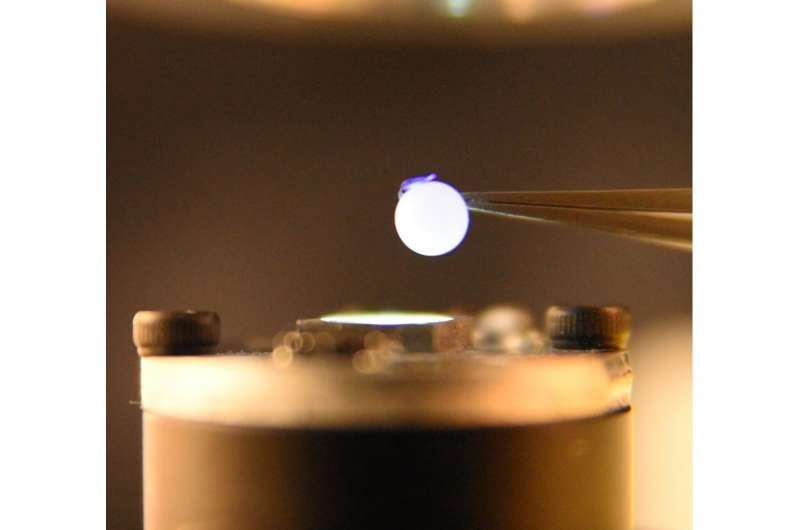Researchers develop arrays of tiny crystals that deliver efficient wireless energy

Imagine a person on the ground guiding an airborne drone that harnesses its energy from a laser beam, eliminating the need for carrying a bulky onboard battery.
That is the vision of a group of University of Colorado at Boulder scientists from the Hayward Research Group.
In a new study, the Department of Chemical and Biological Engineering researchers have developed a novel and resilient photomechanical material that can transform light energy into mechanical work without heat or electricity, offering innovative possibilities for energy-efficient, wireless and remotely controlled systems. Its wide-ranging potential spans across diverse industries, including robotics, aerospace and biomedical devices.
"We cut out the middle man, so to speak, and take light energy and turn it directly into mechanical deformation," Professor Ryan Hayward said.
Hayward and his team describe the new material in a report published July 27 in Nature Materials.
The material is composed of tiny organic crystals that start bending and lifting things when exposed to light. The research shows that these photomechanical materials offer a promising alternative to electrically-wired actuators, with the potential to wirelessly control or power robots or vehicles. Also, improving the efficiency of direct conversion of light to work offers the potential to avoid cumbersome systems for thermal management as well as heavy electrical components.
The research contrasts with previous attempts involving delicate crystalline solids that changed shape through a photochemical reaction, but often cracked when exposed to light and were challenging to process into useful actuators.
"What's exciting is that these new actuators are much better than the ones we had before. They respond quickly, last a long time and can lift heavy things."
The Hayward's Lab innovative approach involves using arrays of tiny organic crystals within a polymer material that resembles a sponge due to its tiny holes. As the crystals grow within the micron-sized pores of the polymer, their durability and energy production upon light exposure are significantly enhanced. Their flexibility and ease of shaping make them highly versatile for a wide range of applications.
The crystals' orientation allows them to perform tasks when exposed to light, such as bending or lifting objects. When the material changes shape with a load attached, it operates like a motor or an actuator and moves the load. The crystals can move objects much larger than themselves. For example, as seen in the image above, the .02 mg strip of crystals successfully lifts a 20 mg nylon ball, lifting 10,000 times its own mass.
CU Boulder researchers also include lead author Wenwen Xu, a former postdoctoral researcher in Hayward's group, (now with the Sichuan University-Pittsburgh Institute) and Hantao Zhou (now with Western Digital), one of Hayward's graduate students.The work also involved collaborators at the University of California Riverside and Stanford University.
Looking ahead, the team aims to advance control over the material's movement. Currently the material can only go from a flat to a curved state by bending and then unbending. Their objective is also to increase efficiency, maximizing the amount of mechanical energy produced out in comparison to the light energy input.
"We still have a ways to go, particularly in terms of efficiency, before these materials can really compete with existing actuators," Hayward says. "But this study is an important step in the right direction and gives us a roadmap for how we might be able to get there in the coming years."
More information: Wenwen Xu et al, Photo-actuators via epitaxial growth of microcrystal arrays in polymer membranes, Nature Materials (2023). DOI: 10.1038/s41563-023-01610-4
Journal information: Nature Materials
Provided by University of Colorado at Boulder New ferroelectric material could give robots muscles
No comments:
Post a Comment